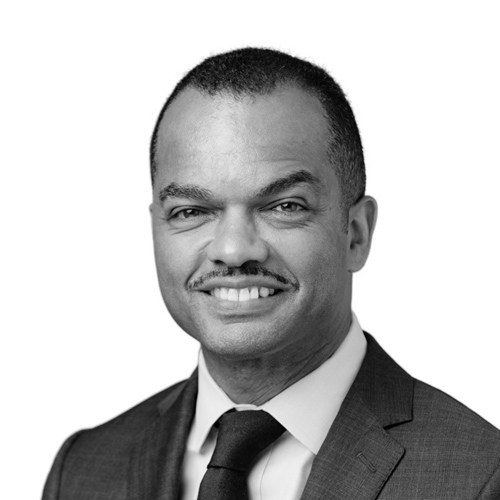
Many engineers get their start as kids, tinkering with toasters, bicycles, or whatever else they can dismantle without their parents noticing. For Liam Quinn, it was no different. He even went a step further when he literally wired his family’s farmhouse back in Ireland. Today, as senior vice president, chief technology officer (CTO), and senior fellow at Dell, that same passion to tinker and solve problems drives him as he leads one of the world’s most respected computer company’s technology efforts.
“I always had an interest in electronics when I was growing up, especially wireless radios,” Quinn says. “I ruined many of the portable radios my parents had, taking them apart and seeing how they worked.” Growing up in rural Ireland, Liam had full days as the eldest of nine children. He did his chores on the farm and walked to the local two-room school each day. As a teenager, his interest and curiosity grew, and he set in motion a project that changed his life: he wired his childhood home and brought electricity to his family farm for the first time. “That was my initial start into electrical engineering,” he says. “Since then, I have always been in engineering, and I never looked back.”
That focus drove Liam to be the only student in his high school class to attend university, an opportunity that lead him to the Dublin Institute of Technology (DIT). He worked in Dublin for a while, then went back to school to earn a degree in computer engineering from the University of Limerick. He was hired by a US company’s Dublin office and taught at DIT until he was transferred to the United States in 1986. In the United States, he earned a master’s in computer engineering from Boston University and started working for Digital Equipment Corporation (DEC). At the time, the PC industry was in its infancy, and companies such as DEC were resistant to the innovation driving change at that time.
In 1989, a small Texas-based start-up began discussing the personal computing model as an alternative to centralized computing supported by DEC, IBM, and others. This new PC concept and business model conflicted with Vax architecture (a successful innovation from DEC in the 1970s) and unsurprisingly, it didn’t sit well with DEC leadership. DEC at that time had more than 145,000 employees worldwide. Innovative ideas and new business models coming from small start-ups such as Compaq Computers were seen as disruptive to the established paradigm from incumbent market leaders such as DEC.
Quinn moved to a start-up in Austin, Texas, in 1993, which was later acquired by Compaq in 1996. He was then recruited by Dell and moved over to the company in 1997. “I had worked on the same campus as Dell and heard good things about the company and people,” Quinn says. “Its culture had a lot of passion, its competitive model and focus on product innovation was really attractive, and at the time, they were really innovating around customer care.”
Now, as CTO, Quinn is responsible for leading technology innovation across the Client Solutions Group. Following last year’s acquisition of data storage company EMC, Quinn is now working with his CTO peers across the Dell Technology family of companies to drive end-to-end solutions and product differentiation that can best serve customers. “We have a whole set of products being built, our core products, and want to add value to those products year after year,” he says. “In parallel, we want to drive new markets. A great example is how we’re driving the virtual reality and augmented reality ecosystems. We have incredible products that span the creation of content—to the infrastructure that houses, secures, and serves that content—all the way to the systems that all kinds of people use to power and consume these experiences.”
In August 2017, the Dell Canvas product came to market and added another innovative accomplishment to Quinn’s résumé. “Dell Canvas is a full-touch environment that sits horizontally on your desk workspace,” he says. “It’s a beautiful, twenty-seven-inch monitor that enables you to work with touch, pen, and a totem knob device. It offers a new way to do things. It connects to just about any Windows 10 PC and consolidates many different user interfaces in a unique way. We had to develop the software and electrical wiring and hardware, and we had to do things that were not off-the-shelf. It was challenging but rewarding to deliver something innovative, unique, and potentially transformative for users in the creative markets.”
The Dell Canvas is just one of many examples that has Quinn getting noticed by his peers in the industry. “Liam is a visionary and a driving force leading the development of cutting-edge technology that is delivering groundbreaking experiences,” says Mark Papermaster, CTO and senior vice president of technology and engineering at semiconductor manufacturing company Advanced Micro Devices. “He fosters a culture of
collaboration and partnership that keeps Dell at the forefront of the industry.”
Quinn clearly has passion for what he does, whether for products in market now or the ones coming from his future-minded team. “It’s exciting and wonderfully challenging to be in the eye of the storm,” he says, “where customer needs, market trends, competitive trends, and technology evolution are blending together in a competitive strategy.”
But to say the world of engineering has changed since he tinkered with his first radio is an understatement. “It has been a fabulous ride, from where it was to where it is now,” he says. “Just think, the processor in your phone today likely has more capability than computers from the late 1980s. When you look at it like that and know the future will only exaggerate the comparisons, the acceleration of technology can be frightening. But only if you let it be.”















